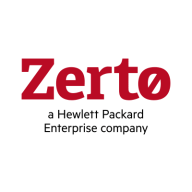Saves time and costs while reducing performance degradationIt's been a very good solution. The reporting has been very, very valuable as, with a very large environment, it's very hard to get your hands on the environment. Turbonomic does that work for you and really shows you where some of the cost savings can be done. It also helps you with the reporting side. Me being able to see that this machine hasn't been used for a very long time, or seeing that a machine is overused and that it might need more RAM or CPU, et cetera, helps me understand my infrastructure. The cost savings are drastic in the cloud feature in Azure and in AWS. In some of those other areas, I'm able to see what we're using, what we're not using, and how we can change to better fit what we have. It gives us the ability for applications and teams to see the hardware and how it's being used versus how they've been told it's being used. The reporting really helps with that. It shows which application is really using how many resources or the least amount of resources. Some of the gaps between an infrastructure person like myself and an application are filled. It allows us to come to terms by seeing the raw data. This aspect is very important. In the past, it was me saying "I don't think that this application is using that many resources" or "I think this needs more resources." I now have concrete evidence as well as reporting and some different analytics that I can show. It gives me the evidence that I would need to show my application owners proof of what I'm talking about. In terms of the downtime, meantime, and resolution that Turbonomic has been able to show in reports, it has given me an idea of things before things happen. That is important as I would really like to see a machine that needs resources, and get resources to it before we have a problem where we have contention and aspects of that nature. It's been helpful in that regard. Turbonomic has helped us understand where performance risks exist. Turbonomic looks at my environment and at the servers and even at the different hosts and how they're handling traffic and the number of machines that are on them. I can analyze it and it can show me which server or which host needs resources, CPU, or RAM. Even in Azure, in the cloud, I'm able to see which resources are not being used to full capacity and understand where I could scale down some in order to save cost. It is very, very helpful in assessing performance risk by navigating underlying causes and actions. The reason why it's helpful is because if there's a machine that's overrunning the CPU, I can run reports every week to get an idea of machines that would need CPU, RAM, or additional resources. Those resources could be added by Turbonomic - not so much by me - on a scheduled basis. I personally don't have to do it. It actually gives me a little bit of my life back. It helps me to get resources added without me physically having to touch each and every resource myself. Turbonomic has helped to reduce performance degradation in the same way as it's able to see the resources and see what it needs and add them before a problem occurs. It follows the trends. It sees the trends of what's happening and it's able to add or take away those resources. For example, we discuss when we need to do certain disaster recovery tests. Over the years, Turbo will be able to see, for example, around this time of year that certain people ramp up certain resources in an environment, and then it will add the resources as required. Another time of year, it will realize these resources are not being used as much, and it takes those resources away. In this way, it saves money and time while letting us know where we are. We've saved a great deal of time using this product when I consider how I'd have to multiply myself and people like me who would have to add resources to devices or take resources away. We've saved hundreds of hours. Most of the time those hours would have to be after hours as well, which are more valuable to me as that's my personal time. Those saved hours are across months, not years. I would consider the number of resources that Turbonomic is adding and taking away and the placement (if I had to do it all myself) would end up being hundreds of hours monthly that would be added without the help of Turbonomic. It helps us to meet SLAs mainly due to the fact that we're able to keep the servers going and to keep the servers in an environment, to keep them to where (if we need to add resources) we can add them at any given time. It will keep our SLAs where they need to be. If we were to have downtime due to the fact that we had to add resources or take resources away and it was an emergency, then that would prevent us from meeting our SLAs. We also use it to monitor Azure and to monitor our machines in terms of the resources that are out there and the cost involved. In a lot of cases, it does a better job of giving us cost information than Azure itself does. We're able to see the cost per machine. We're able to see the unattached volume and storage that we are paying for. It gives us a great level of insight. Turbonomic gives us the time to be able to focus on innovation and ongoing modernization. Some of the tasks that it does are tasks that I would not necessarily have to do. It's very helpful in that I know that the resources are there where they need to be and it gives me an idea of what changes need to be made or what suggestions it's making. Even if I don't take them, I'm able to get a good idea of some best practices through Turbonomic. One of the ways that Turbonomic does to help bring new resources to market is that we are now able to see the resources (or at least monitor the resources) before they get out to the general public within our environment. We saw immediate value from the product in the test environment. We set it up in a small test environment and we started with just placement and we could tell that the placement was being handled more efficiently than what VMware was doing. There was value for us in placement alone. Then, after we left the placement, we began to look at the resources and there were resources. We immediately began to see a change in the environment. It has made the application and performance better, mainly due to the fact that we are able to give resources and take resources away based on what the need is. Our expenses, definitely, have been in a better place based on the savings that we've been able to make in the cloud and on-prem. Turbonomic has been very helpful in that regard. We've been able to see the savings easily based on the reports in Turbonomic. That, and just seeing the machines that are not being used to capacity allows us to set everything up so it runs a bit more efficiently.




